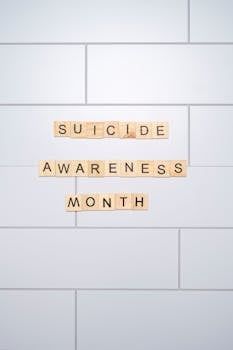Back-to-School Mental Health Crisis: Why September Brings Hidden Challenges for Florida Families
As children across Florida return to classrooms this September, emergency departments are witnessing a dramatic and predictable surge in youth mental health crises. While back-to-school season brings excitement for many families, recent data reveals a sobering reality: this transition period triggers the highest spike in pediatric mental health emergencies of the entire year.
Understanding why this happens—and how to support your child through it—can make the difference between a successful school year and a mental health crisis that derails your family's wellbeing.
1. The September Mental Health Phenomenon: What the Data Reveals
Emergency departments nationwide report that mental health visits for children and adolescents can triple during the first few weeks of school. At Connecticut Children's Medical Center, for example, the typical summer census of 10-20 children with severe mental health needs jumps to 30 during the school year. This pattern repeats across the country, including here in Florida, where the combination of academic pressure and social anxiety creates a perfect storm for emotional distress.
The statistics paint a concerning picture of today's youth mental health landscape. According to the Centers for Disease Control and Prevention's latest Youth Risk Behavior Survey, 40% of high school students experienced persistent feelings of sadness or hopelessness, while 20% seriously considered attempting suicide. These aren't just numbers—they represent our children, our neighbors, our community members who are silently struggling.
What makes September particularly challenging is the convergence of multiple stressors. Students face academic pressures, social dynamics, schedule changes, and the ending of summer freedom all at once. For children already managing anxiety, depression, or other mental health conditions, this transition can feel overwhelming and insurmountable.

The increase in mental health crises isn't solely due to worsening conditions. Teachers and school staff, who interact with students daily, become critical early detection systems. They're often the first to notice changes in behavior, academic performance, or social interaction that might indicate mental health struggles. This means more children receive referrals for mental health services—which is ultimately positive, even though it temporarily increases crisis numbers.
2. Understanding the Root Causes: Why School Transitions Trigger Mental Health Struggles
The back-to-school transition impacts children's mental health through several interconnected pathways. Academic anxiety tops the list, as students worry about grades, college preparation, and meeting expectations from parents, teachers, and themselves. This pressure has intensified significantly over the past decade, with today's students facing more competitive academic environments than previous generations.
Social anxiety presents another major challenge. Middle and high school students particularly struggle with peer relationships, social hierarchies, and the fear of not fitting in. The summer break often provides relief from these social pressures, making the return to school social dynamics feel jarring and overwhelming. For students who experienced bullying or social difficulties in previous years, September can reactivate trauma responses and avoidance behaviors.
Schedule disruption shouldn't be underestimated in its impact on mental health. Many children thrive on routine, and the dramatic shift from flexible summer schedules to rigid school timetables can destabilize their emotional regulation. Sleep patterns change, meal times shift, and free time disappears—all factors that can trigger anxiety and mood disorders in vulnerable children.
Digital and social media pressures have added new layers of complexity to the back-to-school experience. Students face constant comparison through social media, cyberbullying risks, and the pressure to present a perfect image online. The "back-to-school" social media phenomenon, where appearance and popularity are showcased, can intensify feelings of inadequacy and social anxiety.
3. Recognizing the Warning Signs: When to Seek Professional Help
Parents and caregivers need to know the difference between normal adjustment challenges and concerning mental health symptoms that require professional intervention. Normal back-to-school adjustment might include temporary sleep difficulties, mild anxiety about new teachers or classes, or some resistance to returning to school routines. These typically resolve within a few weeks as children adapt to their new schedule.
Warning signs that indicate a need for professional mental health support include persistent changes in sleep or eating patterns, withdrawal from family and friends, significant decline in academic performance, frequent physical complaints without medical cause, expressions of hopelessness or worthlessness, and any mention of self-harm or suicidal thoughts. Additionally, if your child seems unable to function in daily activities or their distress is significantly impacting family life, it's time to seek professional help.
Behavioral changes can be particularly telling. Watch for increased irritability, emotional outbursts that seem disproportionate to the situation, regression to younger behaviors, or new onset of concerning behaviors like substance use, risky sexual behavior, or aggressive actions. These changes often represent attempts to cope with overwhelming emotional distress.

Trust your parental instincts. If something feels different about your child's emotional state or behavior, don't dismiss these concerns as "just a phase." Early intervention in mental health challenges leads to better outcomes and can prevent more serious crises from developing. Remember that seeking help is a sign of strength and good parenting, not failure.
4. Practical Strategies for Supporting Your Child's Mental Health
Creating a supportive home environment starts with open, non-judgmental communication. Regularly check in with your child about their emotional state, school experiences, and any concerns they might have. Ask specific questions rather than general ones—instead of "How was school?" try "What was the best part of your day?" or "Did anything worry you today?" These targeted questions often yield more meaningful responses.
Establishing consistent routines can provide emotional stability during the school transition. Maintain regular sleep schedules, family meal times, and homework routines. Build in time for relaxation and fun activities that your child enjoys. Physical activity is particularly important for mental health, so encourage participation in sports, dance, martial arts, or simply family walks around the neighborhood.
Teach your child practical stress management techniques they can use independently. Deep breathing exercises, progressive muscle relaxation, and mindfulness practices can be powerful tools for managing anxiety and emotional overwhelm. Consider using smartphone apps designed for youth meditation and stress management—these can be especially appealing to technology-savvy teenagers.
Model healthy emotional expression and stress management in your own life. Children learn more from what they observe than what they're told. Show them how you handle stress, disappointment, and challenges. Share age-appropriate examples of how you've overcome difficult situations and emphasize that asking for help is normal and healthy.
Collaborate with your child's school to create a supportive educational environment. Communicate with teachers, counselors, and school administrators about your child's mental health needs. Many schools have accommodation plans that can help reduce academic stress for students managing mental health challenges. Don't hesitate to advocate for your child's needs within the school system.
5. When to Access Professional Mental Health Services
Professional mental health support should be considered whenever your child's emotional distress interferes with their daily functioning, relationships, or academic performance. Don't wait for a crisis to develop—early intervention is always more effective than crisis management. If your child expresses interest in talking to someone outside the family, respect this desire and help them access appropriate professional support.
In Florida, families have multiple options for accessing mental health services. School-based counseling services provide immediate support within the educational environment and can help address academic-related stressors. Community mental health centers offer sliding-scale fees and accept most insurance plans, making professional help accessible to families with varying financial resources.
Telehealth services have revolutionized access to mental health care, particularly for families in rural areas or those with transportation challenges. Through secure video platforms, children and adolescents can access licensed mental health professionals from the comfort and privacy of their own homes. This option often reduces the stigma some young people feel about seeking mental health treatment.
For families facing immediate mental health crises, Florida's crisis intervention services provide 24/7 support. The 988 Suicide and Crisis Lifeline offers immediate telephone support, while mobile crisis teams can provide in-person intervention when needed. These services are designed to prevent psychiatric hospitalization whenever possible while ensuring safety and stabilization.

6. Building Long-Term Emotional Resilience
Supporting your child's mental health extends far beyond managing the back-to-school transition. Building emotional resilience requires ongoing attention to their psychological development and wellbeing. Encourage your child to develop a diverse range of coping strategies, interests, and social connections. Children who have multiple sources of identity and self-worth are more resilient when facing challenges in any single area of their lives.
Foster emotional intelligence by helping your child identify, understand, and appropriately express their emotions. Teach them that all emotions are valid, even if all behaviors aren't acceptable. Help them develop a vocabulary for emotional experiences and practice problem-solving skills when facing interpersonal or academic challenges.
Create family traditions and rituals that provide stability and connection. Regular family meetings, weekly one-on-one time with each child, or special family activities can strengthen emotional bonds and provide consistent support systems. These connections become particularly important during times of stress or transition.
Encourage your child to maintain friendships and develop new social connections. Peer relationships play a crucial role in adolescent mental health and development. Support their participation in activities where they can meet like-minded peers and develop meaningful friendships. However, also teach them about healthy relationship boundaries and how to recognize and address unhealthy peer dynamics.
Conclusion: Creating a Foundation for Mental Wellness
The back-to-school mental health crisis is real and significant, but it's not insurmountable. With awareness, preparation, and appropriate support, families can navigate this challenging transition successfully. Remember that seeking professional mental health support is a sign of strength and wisdom, not weakness or failure.
Every child deserves to feel emotionally supported, understood, and equipped with the tools they need to handle life's challenges. As a community, we must prioritize youth mental health not just during crisis moments, but as an ongoing foundation for healthy development and academic success.
If your child is struggling with the back-to-school transition or any mental health challenges, professional support is available. At MindRefined, we provide comprehensive telehealth mental health services throughout Florida, specializing in anxiety, depression, and the unique challenges facing today's young people. Early intervention and appropriate professional support can make all the difference in your child's emotional wellbeing and academic success.



















